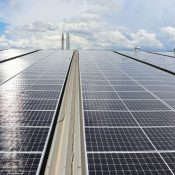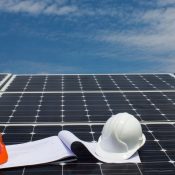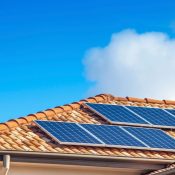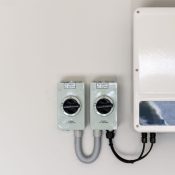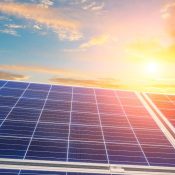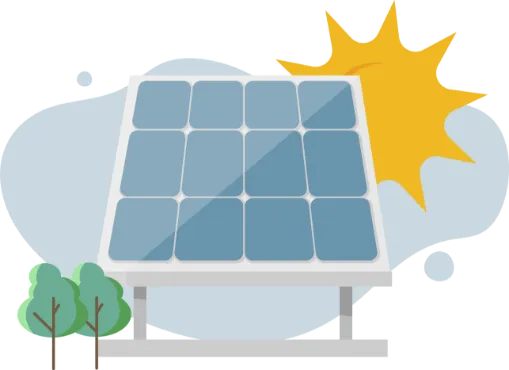Ground Mounted Solar Panels – A Complete Guide

Switching to solar energy is an exciting step, but it can also feel challenging when faced with so many installation options. Many homeowners and businesses struggle with limited roof space, poor roof orientation, or simply want a more flexible system that delivers better energy performance.
This is where ground mounted solar panels come into play, offering freedom in placement, higher efficiency, and long-term savings that make solar energy more accessible. Solar power is becoming essential for cutting electricity costs and reducing carbon footprints, and in Ireland, choosing the right system can make all the difference.
In this blog, you’ll learn everything about ground mounted solar panels, including how they work, their benefits, costs, and the key factors to consider before installation.
What are Ground Mounted Solar Panels?
Ground mounted solar panels are solar energy systems installed on open land instead of being fixed to a roof or building structure. They are secured on metal frames or poles that hold the panels at the best angle to capture maximum sunlight throughout the day.
While they’re most commonly seen in large-scale solar farms, they’re also an excellent option for homeowners and businesses with limited roof space or higher energy demands. This flexible installation method allows for optimal positioning, improved efficiency, and easier maintenance compared to rooftop systems.
Are Ground Mounted Solar Panels More Efficient?
Ground mounted solar panels have the potential to be more efficient than rooftop systems due to their flexibility in positioning and angle. While both types of panels produce the same amount of power under identical conditions, ground mounted systems can be optimised to face the perfect direction and tilt for maximum sunlight exposure.
This adaptability allows them to generate more consistent energy throughout the day. However, being closer to the ground means they are more likely to shading from nearby trees or buildings. To prevent this, they should be installed in a clear, open area with minimal obstructions.
With proper placement and installation, ground mounted solar panels can achieve superior efficiency and performance, especially in properties where roof orientation or shading would otherwise limit output.
How Much Space Do Ground Mounted Solar Panels Take Up?
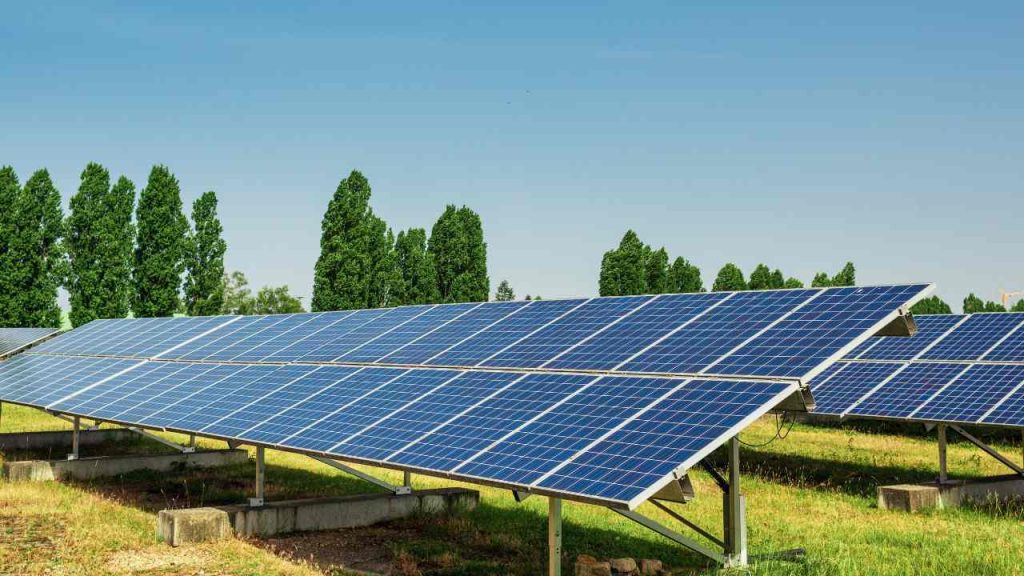
Ground mounted solar panels require more space than rooftop systems, as each panel must be securely mounted on a frame with sufficient gaps for airflow and maintenance. A typical domestic 440W solar panel measures around 1.75 metres by 1.1 metres, but you’ll also need to factor in spacing between each mounting rack.
The total area needed depends on the number of panels per frame and the overall layout of your system. For example, a home installing ten free-standing solar panels would need roughly 20 square metres of open land.
According to SEAI data, most Irish households install larger systems to meet higher energy demands. However, keeping the installation size within planning exemption limits can make the approval process simpler while still offering significant energy savings and long-term efficiency.
What Factors Affect the Performance of Ground Mounted Solar Panels?
The performance of ground mounted solar panels depends on several factors, including their angle, direction, tracking capability, electrical setup, and mounting system. Each plays a key role in how efficiently the panels capture and convert sunlight into energy.
1. The Angle and Direction of Solar Panels
In Ireland, solar panels perform best when facing south at an angle of 30° to 45°. Ground mounted systems offer flexibility in both tilt and direction, helping maximise sunlight exposure. Installers can adjust positioning based on landscape and safety considerations. Some systems allow manual adjustments throughout the year to maintain peak efficiency.
2. Tracking the Sun with Solar Panels
Some ground mounted systems use tracking technology that allows panels to follow the sun’s path across the sky. This feature can significantly increase power generation throughout the day by keeping the panels at the best angle. However, it also raises installation costs and requires more complex wiring and maintenance. Tracking systems are often ideal for larger setups that need maximum energy output rather than smaller domestic installations.
3. Electrical Connections
Ground mounted solar panels must be connected to the property’s electrical system, just like rooftop panels. In some cases, installation is simpler since there’s no need to route cables through a roof. However, if the panels are placed far from the building, extra wiring is required, which can increase cost and reduce efficiency slightly. Proper planning ensures a safe, efficient connection that minimises power loss and complies with all electrical standards.
4. Mounting Systems
Strong and reliable mounting systems are essential for supporting free-standing solar panels. These systems are usually built on concrete bases or steel poles to provide stability against wind and weather. The type of mounting chosen can affect both performance and durability. Pole-mounted structures are ideal for uneven terrain, while fixed-frame systems suit flat areas. A secure and well-installed mount ensures panels remain at the optimal tilt for consistent energy production year-round.
Is Planning Permission Required for Ground Mounted Solar Panels?

Whether you need planning permission for ground mounted solar panels in Ireland depends on the size of your system and the type of property they’re connected to. For domestic homes, installations up to 25 square metres are typically exempt, provided enough private open space is maintained for occupants.
For non-domestic buildings, such as commercial properties or farms, the exemption increases to 75 square metres. However, these exemptions don’t apply to protected structures or properties within architectural conservation areas. The overall height of the panels, from ground to top, must also not exceed two metres.
If your system falls outside these limits, a formal planning application will be required. This process may involve construction reports for support bases and cabling layouts, adding time and cost to the project. Consulting an experienced solar installer ensures compliance and smoother approval.
Are There Grants for Ground Mounted Solar Panels?
Yes, ground mounted solar PV systems in Ireland are eligible for the same SEAI solar PV grants as rooftop installations. Homeowners can currently receive up to €1,800 towards their solar panels, while businesses may qualify for grants of up to €162,600, depending on the system’s size and capacity.
These incentives help reduce the upfront costs of installation and make solar energy more affordable across different property types. While ground mounted systems are an excellent alternative for those with limited roof space or higher energy needs, they can involve additional groundwork and setup expenses.
For smaller domestic systems, this can make them slightly less cost-effective, but with SEAI support, they remain a strong investment for long-term savings and sustainability.
Conclusion
Ground mounted solar panels offer a flexible, efficient, and powerful alternative to traditional rooftop systems. They allow for optimal positioning, easy maintenance, and larger system capacity, making them ideal for homes, farms, and businesses with open land. By understanding factors you can design a solar setup that maximises performance and long-term savings.
With SEAI grants available, investing in ground mounted solar panels has never been more rewarding. Contact Going Solar today to schedule your free consultation and start your journey toward sustainable energy independence.
Planning a switch to solar energy?
Contact Going Solar now and Get Free Advice & Quote Within Minutes!
Frequently Asked Questions
Contact Going Solar Now!
Joe Brennan
Founder @ Going Solar
Joe Brennan, the founder of Going Solar, is dedicated to making solar power mainstream in Ireland and meet SEAI objectives. With a focus on affordability and sustainability, he is bringing renewable energy solutions to homes, reducing costs & environmental impact.
Recent Posts

